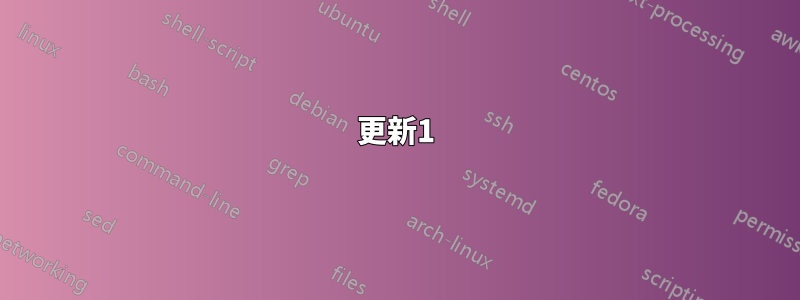
我在 Ubuntu 14.04 上使用 MuseScore 1.3 來寫我的樂譜。然後我將它們儲存為 LilyPond 文件,並使用 將它們包含在我的 tex 文件中\lilypondfile,如下所示:
\documentclass[a4paper]{article}
\begin{document}
Larger examples can be put into a separate file, and introduced with \verb+\lilypondfile+.
\lilypondfile[quote,noindent]{scores/Exercise_1.05.ly}
\end{document}
然後,為了編譯,我這樣做:
$ lilypond-book --pdf solfeo.lytex
$ xelatex solfeo.tex
但是,插入的樂譜寬度不適合文檔,並且超出了頁面的限制。

另外,lilypond-book似乎忽略了我在 中傳遞給它的設定\lilypondfile[quote,noindent]{scores/Exercise_1.05.ly}。如果我理解得很好,quote請在樂譜之前列印音符並noindent刪除第一行的縮排。它既沒有引用註釋,也沒有刪除縮排。
我是 Lilypond 的新手,我嘗試過更改 MuseScore 中文件的邊距,並且我也嘗試了一些 tex 命令,但我找不到使其適合的方法。如果我用 PDF 編譯 ly 檔案lilypond看起來很完美(但在這種情況下我只能得到分數)。只有當我將ly文件嵌入lytex文件中時,樂譜才會超出頁邊距。非常感謝您的建議或更正。我究竟做錯了什麼?謝謝!
PD 這是 MuseScore 產生的 ly 程式碼:
%=============================================
% created by MuseScore Version: 1.3
%=============================================
\version "2.12.0"
#(set-default-paper-size "a4")
\paper {
line-width = 190\mm
left-margin = 10\mm
top-margin = 10\mm
bottom-margin = 20\mm
%%indent = 0 \mm
%%set to ##t if your score is less than one page:
ragged-last-bottom = ##t
ragged-bottom = ##f
%% in orchestral scores you probably want the two bold slashes
%% separating the systems: so uncomment the following line:
%% system-separator-markup = \slashSeparator
}
\header {
}
AvoiceAA = \relative c'{
\set Staff.instrumentName = #""
\set Staff.shortInstrumentName = #""
\clef treble
%staffkeysig
\key c \major
%barkeysig:
\key c \major
%bartimesig:
\time 4/4
\tempo "Andante" 4 = 96 a'2 a | % 1
a r | % 2
r a | % 3
r a | % 4
a r | % 5
a a | % 6
a a4 a | % 7
a r a2 | % 8
r4 a a2 | % 9
a4 r2 a4 | % 10
a2 r4 a \bar "|." | % 11
a2 r \bar "|."
}% end of last bar in partorvoice
\score {
<<
\context Staff = ApartA <<
\context Voice = AvoiceAA \AvoiceAA
>>
\set Score.skipBars = ##t
%%\set Score.melismaBusyProperties = #'()
\override Score.BarNumber #'break-visibility = #end-of-line-invisible
%%every bar is numbered.!!!
%% remove previous line to get barnumbers only at beginning of system.
#(set-accidental-style 'modern-cautionary)
\set Score.markFormatter = #format-mark-box-letters %%boxed rehearsal-marks
\override Score.TimeSignature #'style = #'() %%makes timesigs always numerical
%% remove previous line to get cut-time/alla breve or common time
\set Score.pedalSustainStyle = #'mixed
%% make spanners comprise the note it end on, so that there is no doubt that this note is included.
\override Score.TrillSpanner #'(bound-details right padding) = #-2
\override Score.TextSpanner #'(bound-details right padding) = #-1
%% Lilypond's normal textspanners are too weak:
\override Score.TextSpanner #'dash-period = #1
\override Score.TextSpanner #'dash-fraction = #0.5
%% lilypond chordname font, like mscore jazzfont, is both far too big and extremely ugly ([email protected]):
\override Score.ChordName #'font-family = #'roman
\override Score.ChordName #'font-size =#0
%% In my experience the normal thing in printed scores is maj7 and not the triangle. (olagunde):
\set Score.majorSevenSymbol = \markup {maj7}
>>
%% Boosey and Hawkes, and Peters, have barlines spanning all staff-groups in a score,
%% Eulenburg and Philharmonia, like Lilypond, have no barlines between staffgroups.
%% If you want the Eulenburg/Lilypond style, comment out the following line:
\layout {\context {\Score \consists Span_bar_engraver}}
}%% end of score-block
#(set-global-staff-size 20)
更新1
我正在貼上 的編譯輸出lilypond-book,儘管我不確定它對您有多大用處,因為它是西班牙語的:
$ lilypond-book --pdf solfeo.lytex lilypond-book(GNU LilyPond)2.18.2 正在閱讀 solfeo.lytex... 在檔案“/tmp/tmpN3IGhy.tex”上執行“pdflatex”以偵測預設頁面設定。 解剖... 寫片段... 加工... 奔跑的睡蓮池... GNU LilyPond 2.18.2 Procesando «snippet-map-3001632500490555250.ly» 阿納利贊多... Procesando «solfeo.lytex» 阿納利贊多... Renombrando la entrada a: «scores/Exercise_1.05.ly» 音樂詮釋...[8] 圖形設計前的準備工作 線條計算... 迪布揚多洛斯系統... Salida de la página hacia «ba/lily-399811ac.eps»... Convirtiendo en «ba/lily-399811ac.pdf»... Salida de la página hacia «ba/lily-399811ac-1.eps»... Salida de la página hacia «ba/lily-399811ac-2.eps»... Convirtiendo en «ba/lily-399811ac-1.pdf»... Convirtiendo en «ba/lily-399811ac-2.pdf»... 寫入 «ba/lily-399811ac-systems.texi»... 寫入 «ba/lily-399811ac-systems.tex»... 寫入 «ba/lily-399811ac-systems.count»... 恩霍拉布埃納。 La compilación se ha completado satisfactoriamente. 正在連結檔案... 正在編譯 /media/admin/DATOS/Dropbox/code/solfeo-book/out/solfeo.tex... 寫入“/media/admin/DATOS/Dropbox/code/solfeo-book/out/solfeo.tex”...
我希望這有幫助
更新2
我嘗試過另一種方法。我已從 MuseScore 匯出到 MusicXML。然後我用過:
musicxml2ly Exercise_1.05.xml -o Exercise_1.05_.ly
將.xml文件轉換為.ly文件,並再次編譯。寬度仍然不適合屏幕=(我已經沒有想法了。
答案1
lilypond-book只是一種複雜的方法,為每個範例產生裁剪後的 PDF 影像,然後自動將它們包含在 LaTeX 檔案中。
lilypond在我看來,您可以透過使用 EPS 後端來產生裁剪為音樂大小的圖像來手動完成相同的操作,這更簡單。
那麼唯一真正的 LaTeX 元件就是使用該套件包含 PDF 圖像graphicx。重點是您可以在來源中設定圖像的寬度lilypond,然後將其以其自然大小包含在 LaTeX 文件中。
在下面的範例中,您可以在所有音樂範例原始檔中使用\include該文件,編譯後它們將產生裁剪後的 PDF。example.ly.ly
本範例的三個檔案:
example.ly-- 裁切音樂範例的頁面佈局lilypond
score.ly-- 您的音樂範例,\includes頁面佈局由其命令example.ly
analysis.tex-- 範例 TeX 檔案顯示如何包含影像。
文件1,example.ly
% STYLE SHEET FOR IN-TEXT EXAMPLES
\version "2.18.2"
#( ly:set-option 'backend 'eps )
\paper{
indent = 0.75\in
line-width = 6.5\in
top-margin = 1\in
bottom-margin = 2\in
ragged-bottom = ##t
ragged-last-bottom = ##t
oddFooterMarkup=##f
oddHeaderMarkup=##f
bookTitleMarkup = ##f
scoreTitleMarkup = ##f
}
文件2——score.ly
\version "2.18.2"
\include "example.ly"
Music = {
\clef "tenor"
\time 3/4
c4 d4 e4 |
f2 g4~ |
g4 a2 |
b2. |
c'2. |
\bar "||"
}
\score{
<<
\new Staff { \Music }
>>
\layout {}
}
文件 3 -analysis.tex
\documentclass{article}
\usepackage[letterpaper,margin=1in]{geometry}
\usepackage{graphicx}
\usepackage{lipsum}
\begin{document}
\section{Music Example}
\lipsum[1]
See example~\ref{fig:score1}.
%*******************
\begin{figure}
\includegraphics{score}\centering
\caption{Score example 1}
\label{fig:score1}
\end{figure}
%*******************
\lipsum[2]
\end{document}

答案2
我知道這個老問題,但我今天正在尋找解決方案,所以我想仍然相關。這是我正在使用的解決方案,我只是將其放在文件的序言中。
\usepackage{graphicx}
\setkeys{Gin}{width=\linewidth}
這是有效的,因為在幕後正在使用的是\includegraphics,我只是將這些圖像的預設寬度設定為一條線的寬度,這樣它就不會溢出頁面。


